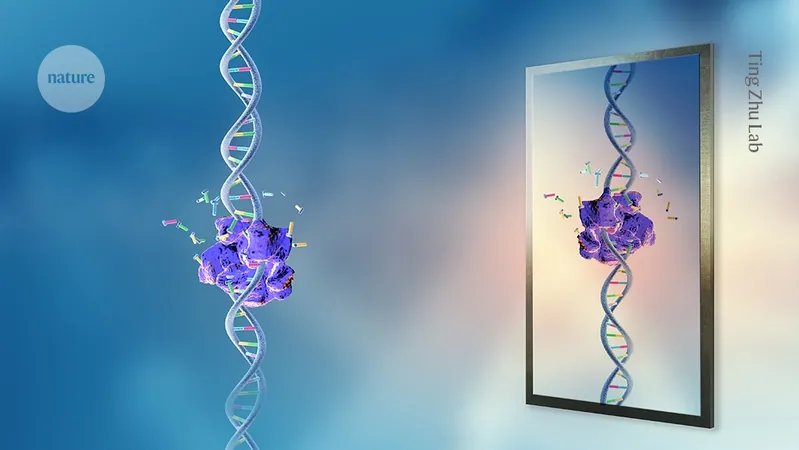
The Hot Debate on Restricting 'Mirror Life' Research: What’s at Stake?
2025-09-15
Author: Daniel
A Controversial Discussion Unfolds in Manchester
This week, an intense debate is brewing among scientists in Manchester, UK, as they ponder the ethical implications of research into ‘mirror life’—the creation of synthetic cells composed of mirror-image molecules. These bizarre creations could potentially challenge our understanding of biology, but at what cost?
Concerns Over Unseen Dangers
The conversation has shifted dramatically over the past year, with a growing chorus of scientists warning that the risks associated with these experimental endeavors may far outweigh any potential benefits. John Glass, a synthetic biologist from the J. Craig Venter Institute, emphasizes a unified fear: mirror-image cells could lead to catastrophic consequences for human health and the environment.
The Science Behind Chiral Molecules
In nature, many molecules are ‘chiral,’ meaning they exist in two mirror-image forms, much like left and right gloves. Our proteins, for instance, are constructed from left-handed amino acids, while DNA spirals like a right-handed screw. Researchers posit that deciphering the mysteries of these mirror-image molecules could reveal crucial insights into their origins.
Potential Advantages: Therapeutics or Traps?
Interestingly, mirror-image molecules might offer unique therapeutic advantages. Because the body’s enzymes are tuned to recognize only specific forms, these synthetic variants could be resistant to breakdown, paving the way for innovative drug developments. A case in point is etelcalcetide, a therapeutic peptide with mirror-image amino acids, which received FDA approval in 2017 for chronic kidney disease treatment.
A Double-Edged Sword?
However, this resilience poses an alarming dilemma. If fully developed, an entire synthetic mirror-image cell could spread uncontrollably either within the body or through the environment, leading to unforeseen consequences.
Voices of Reason Amidst Panic
Sven Klussmann, CEO of Aptarion Biotech, advocates for a balanced approach, arguing against hasty restrictions while acknowledging the potential risks. In contrast, Kate Adamala, a synthetic biologist, warns of the considerable dangers posed by such research, stating the benefits could be achieved through safer traditional methods.
Setting Boundaries: The Future of Research?
As researchers inch closer to synthesizing viable cells inspired by natural chirality, Glass acknowledges that constructing a true mirror-image cell may still be decades away, if feasible at all. Despite these concerns, a significant push for research funding subsided only after awareness of the associated risks began to emerge.
Conclusion: A Cautious Path Forward?
The conversation in Manchester marks just the beginning of an essential discourse on balancing innovation with caution. As science marches forward, the implications of enabling ‘mirror life’ will require careful navigation, oversight, and perhaps a reevaluation of what it means to create life.




 Brasil (PT)
Brasil (PT)
 Canada (EN)
Canada (EN)
 Chile (ES)
Chile (ES)
 Česko (CS)
Česko (CS)
 대한민국 (KO)
대한민국 (KO)
 España (ES)
España (ES)
 France (FR)
France (FR)
 Hong Kong (EN)
Hong Kong (EN)
 Italia (IT)
Italia (IT)
 日本 (JA)
日本 (JA)
 Magyarország (HU)
Magyarország (HU)
 Norge (NO)
Norge (NO)
 Polska (PL)
Polska (PL)
 Schweiz (DE)
Schweiz (DE)
 Singapore (EN)
Singapore (EN)
 Sverige (SV)
Sverige (SV)
 Suomi (FI)
Suomi (FI)
 Türkiye (TR)
Türkiye (TR)
 الإمارات العربية المتحدة (AR)
الإمارات العربية المتحدة (AR)